What is a dink in pickleball
Ever watch a pickleball game and see a player perform a soft, strategic shot that seems to defy the usual power plays? That’s the dink. It’s a subtle, yet powerful move that can transform the dynamics of any match. But what is a dink in pickleball, and why does it hold such strategic importance? This seemingly simple shot packs a punch in its finesse and precision, challenging players to rethink their approach to the game. Dive into this article to uncover the secrets behind the dink, explore its crucial role in pickleball strategy, and elevate your own game with this indispensable skill.
What is a dink in pickleball?
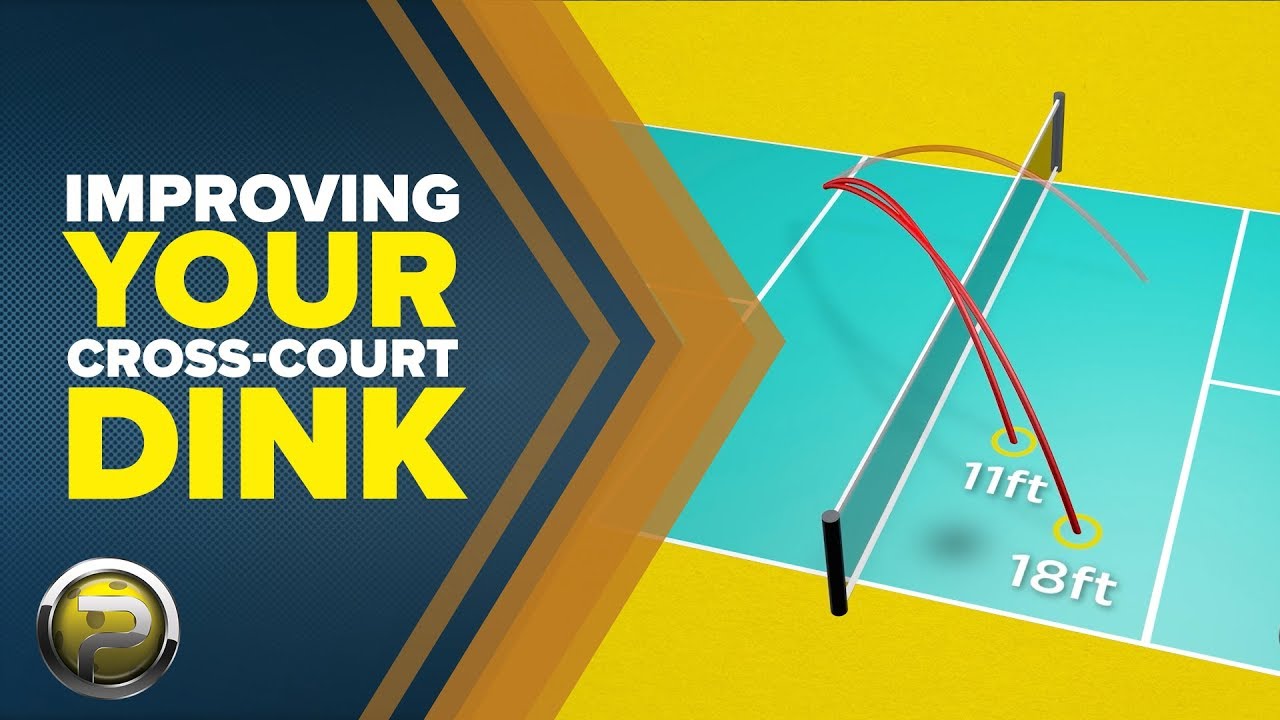
A dink in pickleball is a soft, controlled shot that is typically played from near the net in the non-volley zone, also known as the “kitchen”. The purpose of a dink is to arc the ball just over the net, making it land in the opponent’s non-volley zone. This type of Pickleball shot requires finesse and precise control, aiming to make it challenging for the opponent to attack aggressively.
Origin of the Term
The term “dink” is believed to have originated from informal paddle sports culture, where players often invent terms to describe specific types of shots. In pickleball, as players developed the sport, the soft, controlled shot over the net became known as a “dink”. The simplicity and playfulness of the term align well with the casual and social nature of the game, reflecting both its ease of execution and strategic importance in gameplay.
Importance of Dinking in Pickleball
Dinking plays a crucial role in the strategic and technical aspects of pickleball. Whether you’re playing offensively or defensively, mastering the dink can give you a significant edge over your opponents.
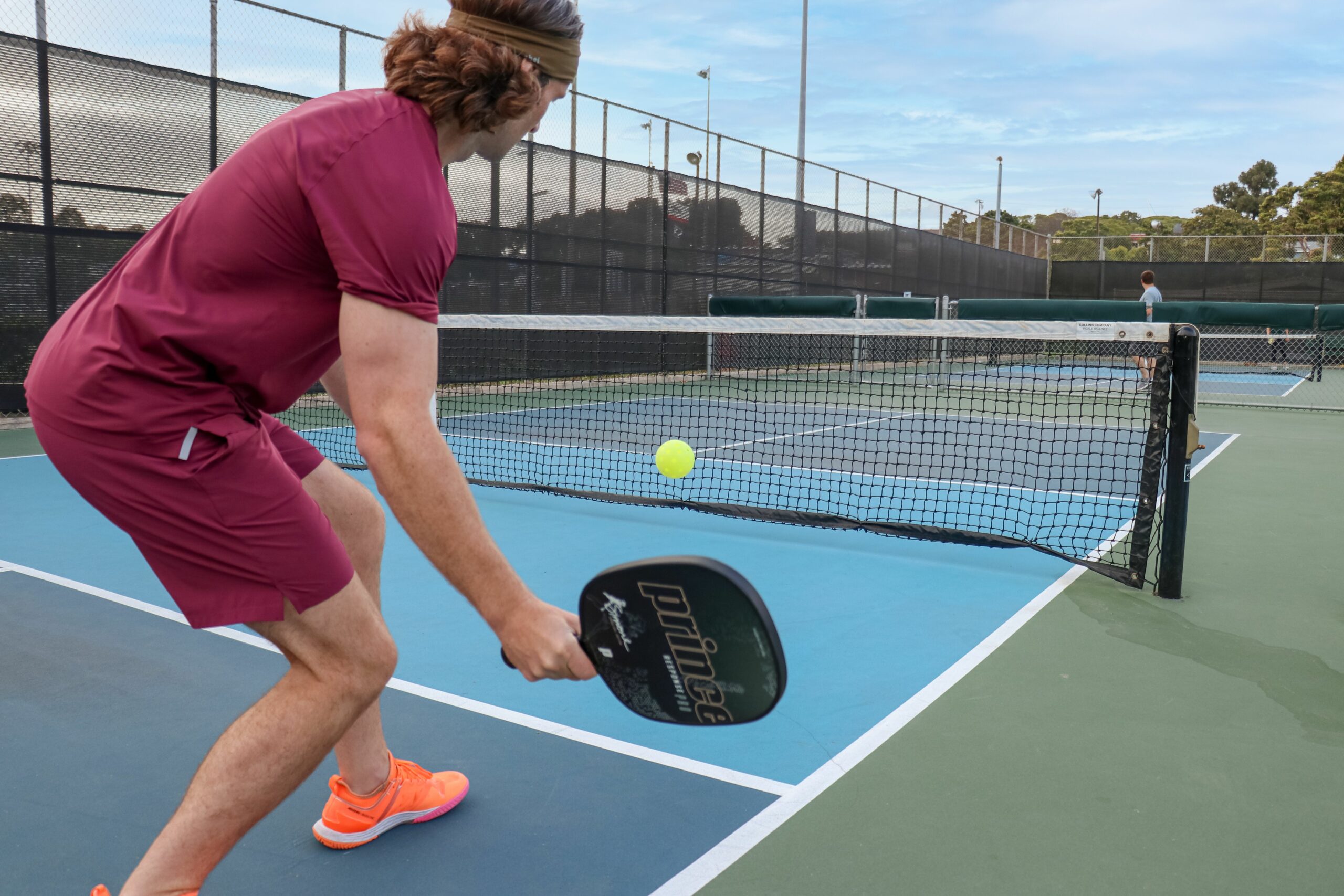
Offensive vs Defensive Dinks
Offensively, dinks can be used to manipulate your opponent’s position and create openings. By softly placing the ball in challenging spots, you force the opponent to move, potentially making an error or exposing weak spots. For example, targeting the feet or the weaker side of your opponent can lead to high returns, setting you up for a smash.
Defensively, dinking helps in managing the pace of the game. When under pressure, a well-placed dink can slow down the rally, giving you time to recover and reposition. It reduces the opponent’s chances to attack, effectively neutralizing their advantage.
Role in Game Strategy
Dinking is more than just a shot it’s a tactical maneuver. A good dink game can extend rallies, wear down opponents, and gradually take control of the point. It promotes patience and precision, encouraging a more thoughtful approach to the game rather than relying solely on power shots. For instance, players like Simone Jardim, a renowned pickleball champion, frequently use dinks to craft their strategies and win points, making the dink an integral part of competitive play.
Mechanics of a Dink
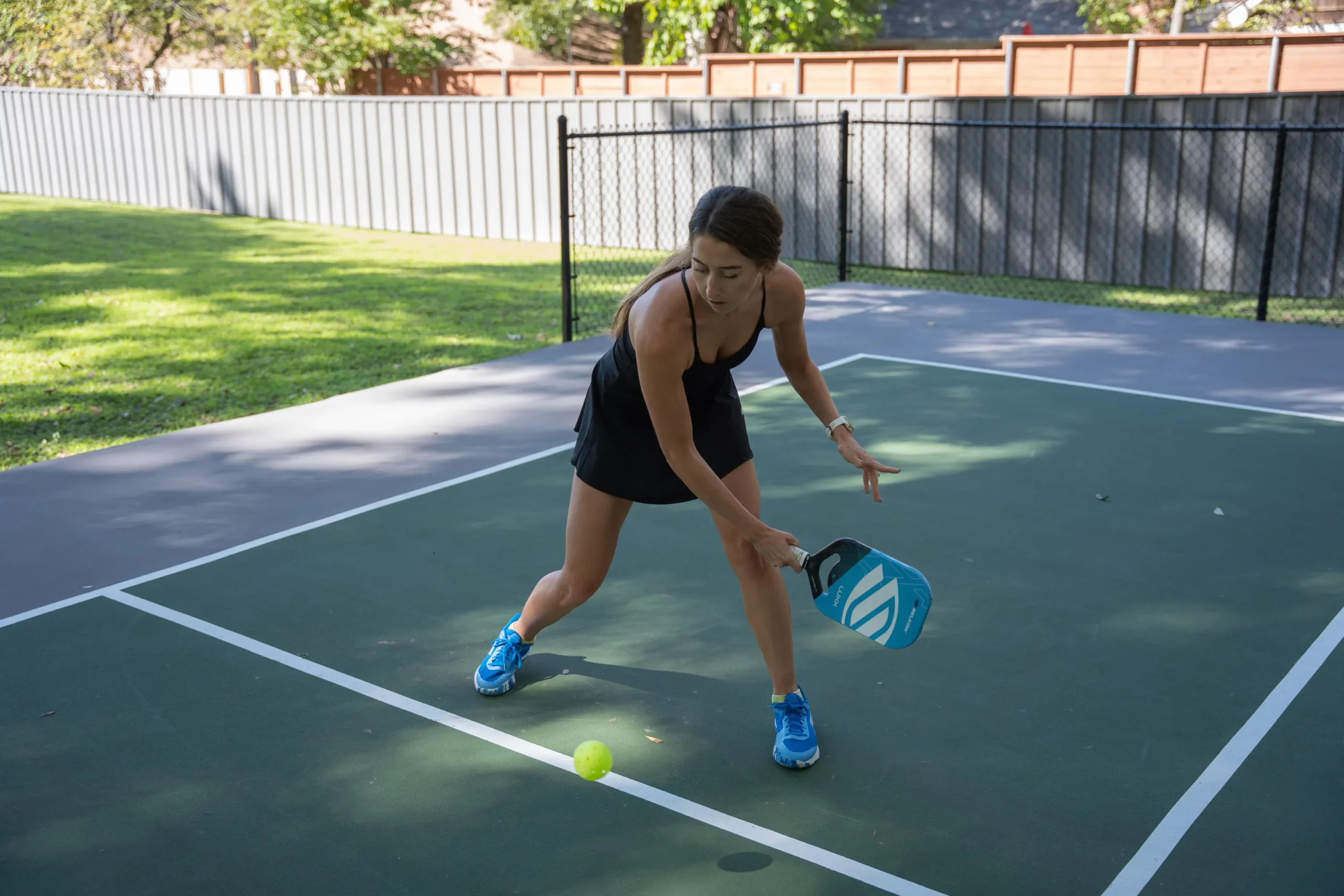
Proper Positioning
Positioning is key in executing a successful dink. Stand near the non-volley zone line with your feet shoulder-width apart, knees slightly bent for balance. Maintain an athletic stance, ready to adjust your position quickly. This stance ensures that you can move laterally or vertically to meet the ball.
Grip and Paddle Preparation
Use a continental grip hold the paddle as if you’re shaking hands with it. This grip offers optimal control and adaptability. Keep your paddle out in front of you with a relaxed grip, allowing for subtle adjustments as needed.
Timing and Body Movement
Timing your dink shot is crucial. Watch the ball closely and move your body accordingly. Ideally, you’ll want to contact the ball just before it reaches its peak height. Use your legs to lift and guide the shot rather than relying solely on your arm. This combination of body movement and timing helps maintain control and consistency.
Paddle Angle and Follow Through
The angle of your paddle is vital in determining the shot’s trajectory. Slightly angle the paddle upwards to lift the ball over the net gently. Follow through naturally but conservatively to avoid an overly powerful shot. The follow-through should be part of a smooth and controlled motion, ensuring the ball lands softly in the opponent’s non-volley zone.
Key Techniques for Executing a Dink
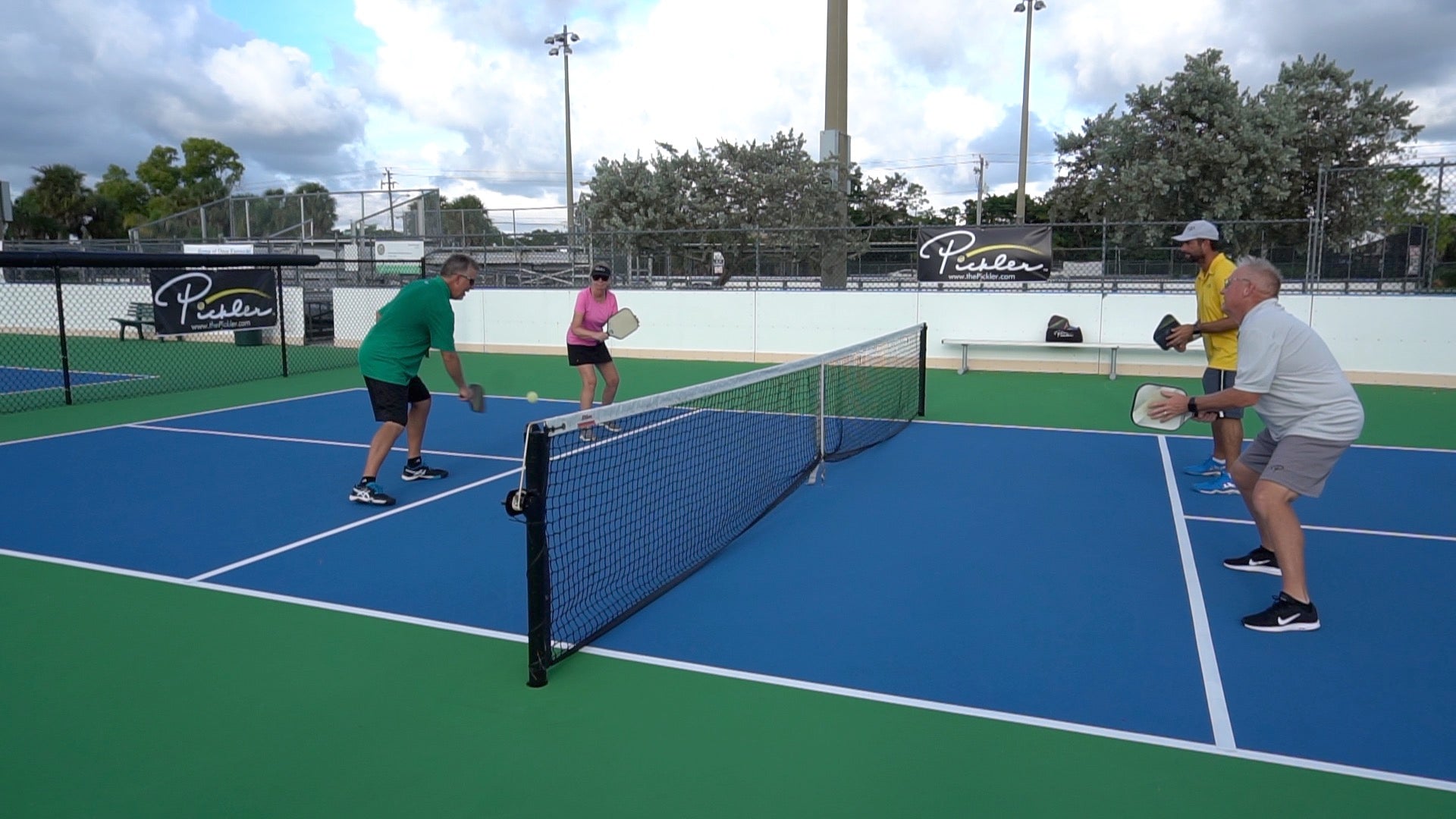
Soft Touch and Control
Mastering soft touch and control is essential for a perfect dink. The objective is to gently loft the ball over the net without giving your opponent an easy shot to exploit. A relaxed grip and minimal wrist action contribute significantly to achieving this touch. Think of it as painting the ball over the net, emphasizing finesse over force.
Targeting the Non-Volley Zone
A successful dink should land in the non-volley zone, making it difficult for your opponent to execute a strong return. Targeting the opponent’s feet or weaker side maximizes the shot’s effectiveness. This forces awkward returns, potentially setting up the next shot for a decisive hit.
Dinking Variations
To keep your opponent guessing, mix up your dinks. Use crosscourt dinks to stretch your opponent laterally, making them cover more ground. Employ straight dinks for direct pressure. Adding spins, such as backspin or topspin, can also add an element of unpredictability. These variations disrupt your opponent’s rhythm and make it harder for them to anticipate your next move.
Dinking Drills for Improvement
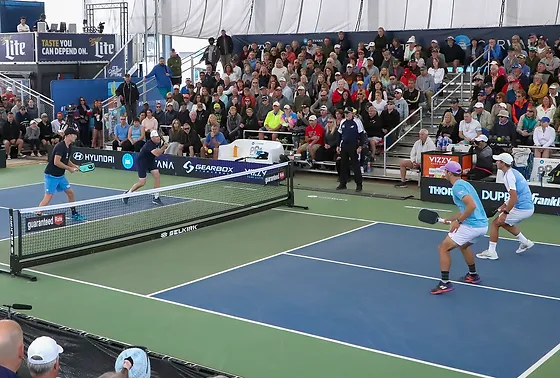
Crosscourt Dink Drill
An effective way to improve your dinking skills is through the crosscourt dink drill. Pair up with a partner and stand diagonally from one another at the non-volley zone line. Practice hitting the ball back and forth, focusing on keeping it within the non-volley zone. This drill reinforces control and precision, crucial for effective crosscourt dinks.
Sideline Dink Practice
Sideline dink practice involves hitting dinks parallel to the sidelines. This helps in mastering straight dinks and improving spatial awareness. By practicing along the sidelines, you can better gauge distances and angles, preparing you for real-game scenarios.
Target Practice Exercises
Set up targets using cones or markers in the non-volley zone. Practice hitting these targets consistently. This drill enhances your accuracy and placement, vital for challenging your opponent effectively during a match. By aiming for specific spots, you improve both the precision and reliability of your dinks.
Common Mistakes to Avoid
Hitting Dinks Too Hard
One of the most common errors is hitting dinks too hard. Remember, the goal is to keep the ball low and soft enough to land in the non-volley zone. Overhitting the ball can result in it going long or high enough for your opponent to volley back aggressively. Focus on a gentle touch, reducing power to ensure the shot’s effectiveness.
Poor Footwork Issues
Footwork is critical in dinking. Many players get caught flat-footed, leading to poor shot execution. Always stay on the balls of your feet, ready to move quickly. Practice lateral movements and balance drills to improve your footwork, ensuring you’re always in the best position to execute a perfect dink.
When to Use a Dink
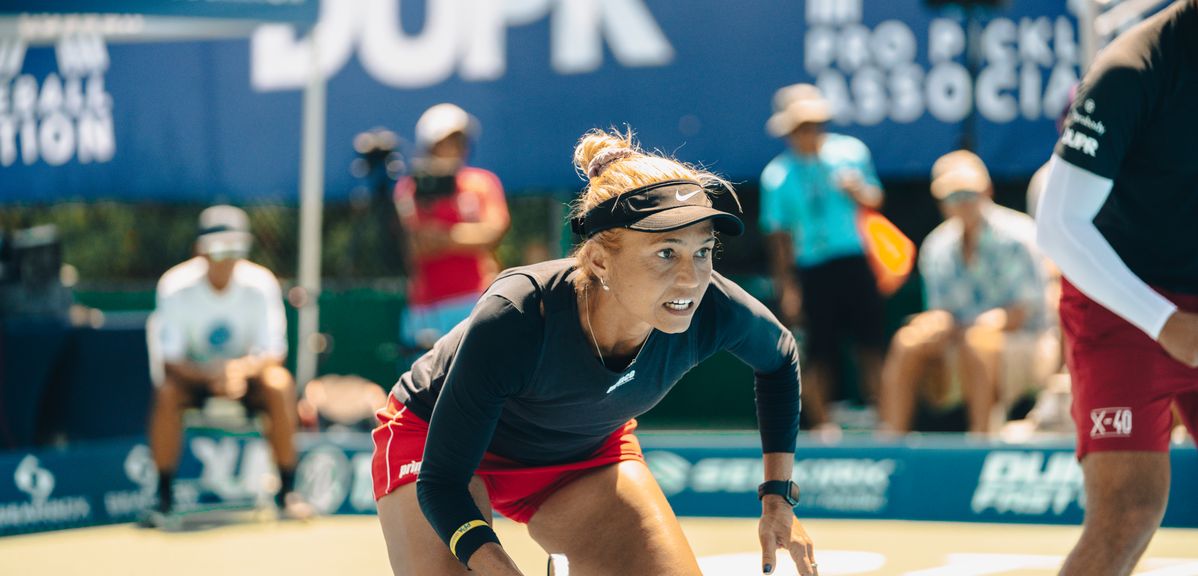
Situational Awareness
Understanding when to use a dink requires good situational awareness. If your opponent is positioned deep in the court, a dink can draw them forward, disrupting their rhythm. Conversely, if you’re under pressure and need to regain control, using a dink to slow the game can be beneficial. Recognizing these moments is key to strategic gameplay.
Adapting to Opponent’s Style
Adapting to your opponent’s style is crucial. For instance, if they favor power shots, continuous dinks can force them into uncomfortable, soft exchanges, reducing their attacking opportunities. Similarly, if they struggle with low shots, dinks can consistently exploit this weakness, giving you the upper hand.
Dinking in Competitive Play
Analyzing Opponent Weaknesses
In competitive play, analyzing your opponent’s weaknesses becomes critical. Observe their reaction to dinks – do they struggle with low balls? Are they slow to react when forced to move forward? By exploiting these weaknesses through targeted dinks, you can gain a strategic advantage.
Building Long Rallies
One strategic use of dinks in competitive play is to build long rallies. This tactic tires the opponent and increases the chance of them making errors. By consistently executing controlled dinks, you prolong the exchange, waiting for the perfect moment to strike decisively.
Advanced Dinking Strategies
Mixing Dinks with Other Shots
Incorporating dinks with other shots like drives and lobs adds complexity to your game. For instance, after a series of dinks, a sudden drive can catch your opponent off guard. Mixing these shots keeps your opponent guessing, preventing them from settling into a predictable pattern.
Creating Angles
Creating angles with your dinks can open up the court. Crosscourt dinks force your opponent to cover more distance, potentially opening up the opposite side for an attack. Similarly, angled dinks can draw your opponent off the court, creating opportunities for winning shots.
FAQs
What Is Considered a Dink in Pickleball?
A dink in pickleball is a controlled, soft shot that lands in the non-volley zone, just over the net. The primary goal is to keep the ball low, forcing the opponent to hit upward, which reduces their attacking options.
What is the Difference Between a Dink and a Drop Shot?
While both are soft shots, a dink is typically executed close to the net, landing in the non-volley zone to slow the game. A drop shot, however, is usually hit from the baseline or mid-court, aiming to fall short in the opponent’s non-volley zone as a strategic surprise.
How Do You Hit a Dink in Pickleball?
To hit a dink, position yourself near the non-volley zone, use a continental grip, and softly tap the ball just over the net. Focus on precise control, maintaining a relaxed grip, and aiming the ball to land in the opponent’s non-volley zone.
Why is Dinking Important in Pickleball?
Dinking is crucial because it controls the game’s pace, creates strategic openings, and reduces the opponent’s chances of hitting strong, aggressive shots. Effective dinking can force errors, extend rallies, and set up offensive plays.
Conclusion
Mastering the dink shot is essential for any serious pickleball player. Its strategic value goes beyond just soft, controlled shots. When executed effectively, dinks can disrupt opponents, control the game’s pace, and set up winning opportunities. By understanding and perfecting the mechanics, techniques, and strategic applications of dinking, players can elevate their game significantly. Whether you are a beginner or an advanced player, the dink remains a cornerstone of effective pickleball strategy, making its mastery indispensable for competitive success.
